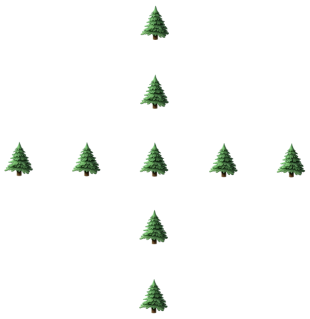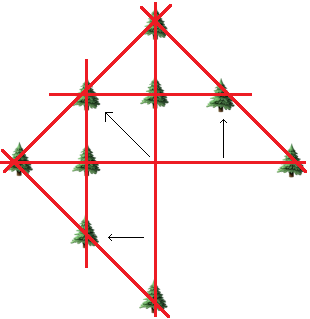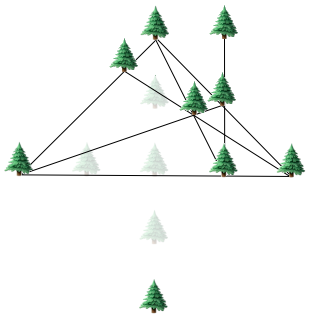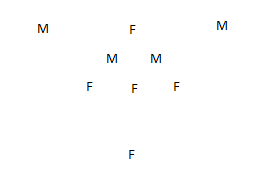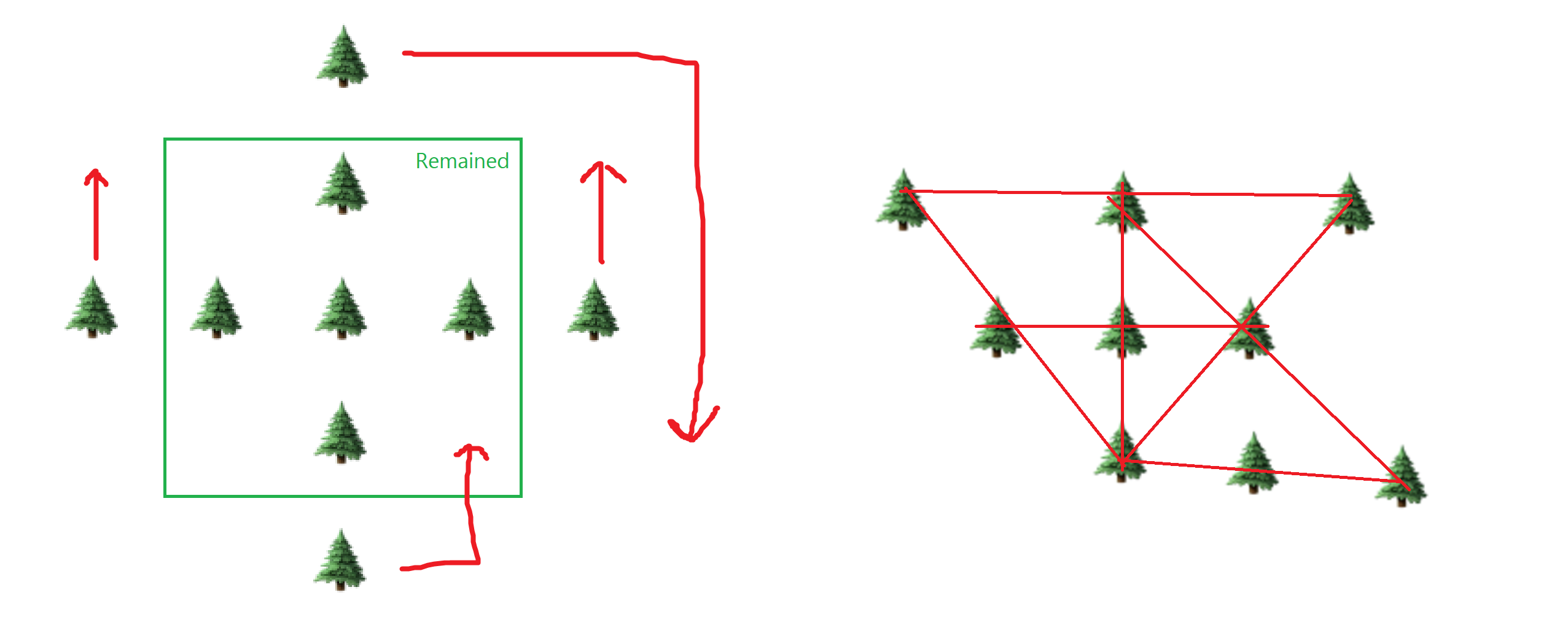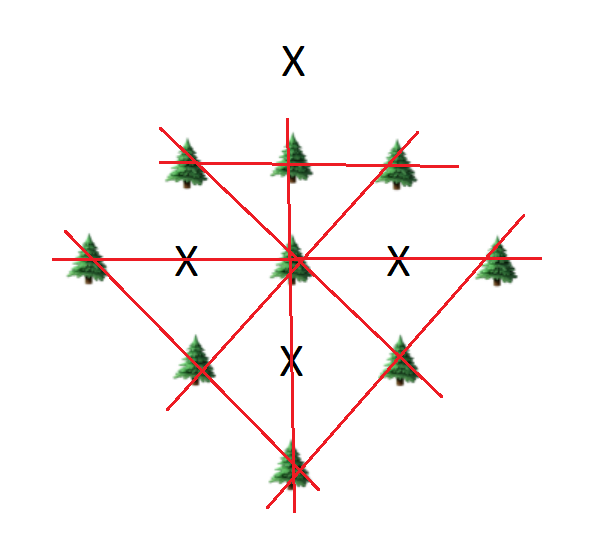The following puzzle is a variant of a puzzle published in the May 8, 1926 issue of THE WINNIPEG TRIBUNE MAGAZINE:
In the picture below there are nine trees arranged in two rows with five trees in each row. The puzzle is to reposition four of the trees leaving the other trees untouched so that you wind up with exactly seven rows with three trees in each row. Rows can be horizontal, vertical or slanted at any angle.

